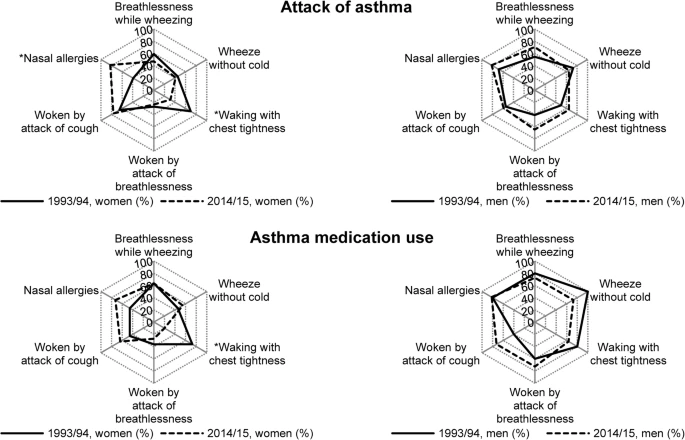Aims
The aims of the study were to investigate prevalence trends of respiratory symptoms, asthma and asthma treatment among young adults in Estonia and to estimate changes in symptom profile among subjects who self-report asthma attacks or use asthma medications.
Methods
Two similar questionnaires on respiratory health were sent to subjects in Tartu, Estonia, aged between 20 and 44 years; first in 1993/94, and then in 2014/15. To study the impact of different respiratory symptoms on asthma diagnosis and treatment, the log–binomial regression was used to estimate the association between ‘attack of asthma’ (as a proxy for current asthma) and respiratory symptoms as well as asthma treatment and respiratory symptoms, adjusted for age, sex and smoking history.
Results
 |
| Prevalence (%) of respiratory symptoms in women and men with attack of asthma and asthma medication use. *p < 0.05 from Chi-square test |
Conclusion
Self-reported asthma attacks and asthma medication use has increased in last 20 years, while the prevalence of most respiratory symptoms either decreased or did not change. It is likely that changes in asthma symptom profile have had an impact on the prevalence of asthma and asthma treatment.
No comments:
Post a Comment